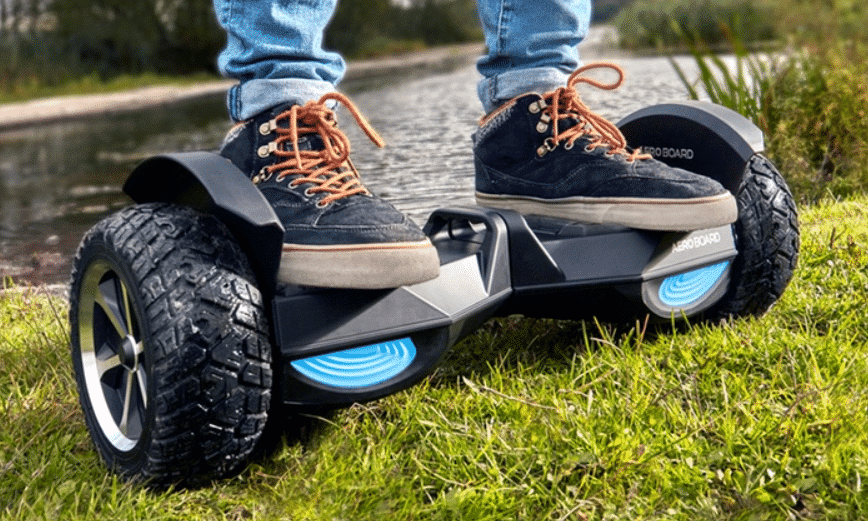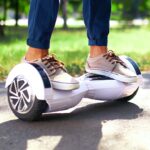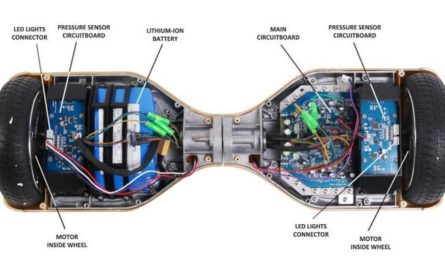Onewheel and hoverboard are two popular personal transportation devices that have taken the world by storm. They offer an exciting and fun way to travel short distances, and their compact size makes them ideal for urban areas. However, when it comes to choosing between Onewheel and hoverboard, many people find themselves confused. In this article, we will take a closer look at Onewheel vs hoverboard, comparing their key features, riding experience, and suitability for different ages and skill levels.
Table of Contents
Understanding Onewheel and Hoverboard
Onewheel and hoverboard are designed for the same purpose of providing a fun and efficient way to travel short distances. However, they have significant differences in their design, features, and performance.
Onewheel
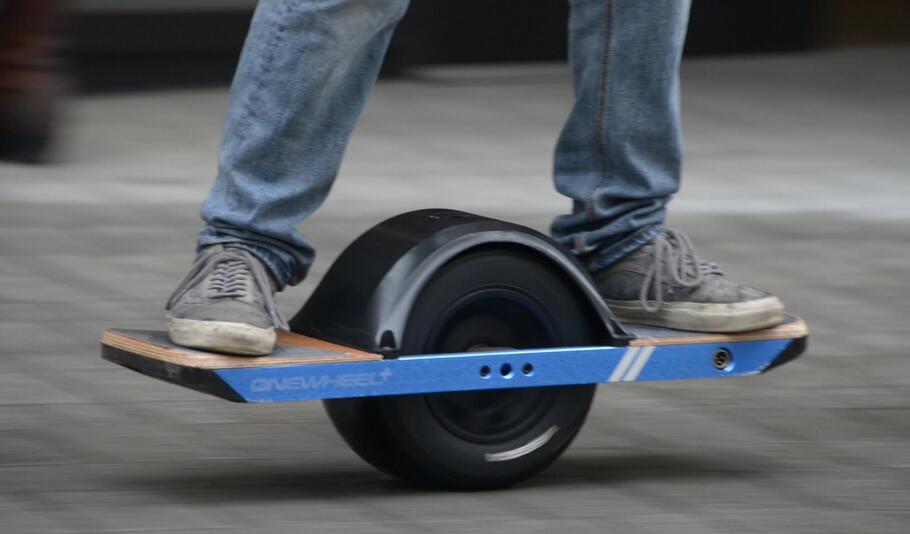
Onewheel is a self-balancing single-wheel electric-powered vehicle that is designed to mimic the feeling of snowboarding. The rider stands on a platform that is attached to a single large wheel. The wheel is powered by an electric motor and is controlled by the rider’s body movements. Onewheel uses self-balancing technology that allows the rider to maintain balance while riding. It is suitable for a variety of terrains, including dirt, grass, and pavement.
Onewheel comes in two models, the Onewheel Pint and the Onewheel XR. The Pint has a smaller wheel and is designed for short commutes, while the XR has a larger wheel and is designed for longer distances. Onewheel has a larger battery capacity than a hoverboard, so it can travel longer distances on a single charge. The charging time for Onewheel ranges from 60 minutes to 110 minutes.
Hoverboard
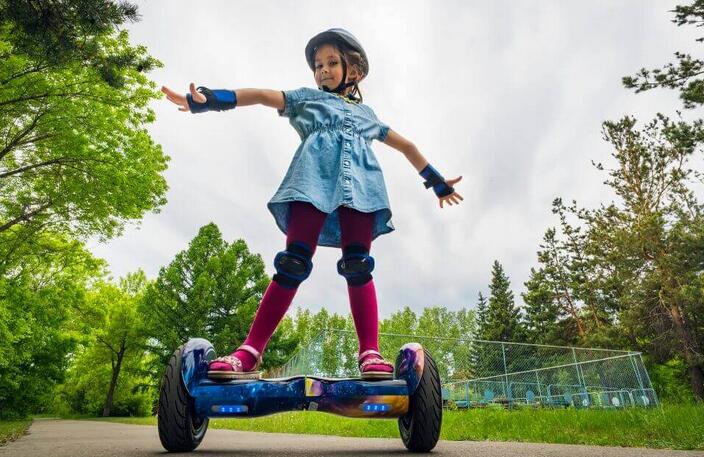
Hoverboard, on the other hand, is a two-wheeled self-balancing electric scooter that is designed to be ridden in a standing position. It uses a similar technology as the Onewheel, but it has two wheels instead of one.
The rider stands between the two wheels and uses their body weight to control the direction and speed of the device. Hoverboards are suitable for smooth surfaces like pavement and indoor floors.
Hoverboards come in different sizes, ranging from 6″ to 10″ wheel diameters, with the larger wheels being better suited for higher speeds. The battery life of a hoverboard is shorter than that of an Onewheel, and it can travel shorter distances on a single charge. The charging time for hoverboards ranges from 1 to 4 hours.
Onewheel vs Hoverboard: Which One is Better for You?
1. Key Features Comparison
When it comes to key features, Onewheel and Hoverboards have their own unique selling points. Here’s a comparison of some of the most important features to consider:
Wheels
Onewheels have a single large wheel at the center, while Hoverboards have two smaller wheels on either side. This design difference affects the riding experience, stability, and handling of the two devices.
Speed
Onewheels can reach speeds of up to 19mph on a smooth surface, while Hoverboards generally have a top speed of around 10mph. However, speed can vary depending on the model and motor of the device.
Models
Onewheel offers a range of models, including the Pint, XR, and GT, each with its own unique features and specifications. Hoverboards also come in different models, but there is less variety compared to Onewheel.
Motor
Onewheels have a powerful motor that provides quick acceleration and a smooth riding experience, while Hoverboards have a less powerful motor that may struggle on inclines or rough terrain.
Range
Onewheels have a longer range than Hoverboards, with some models capable of traveling up to 18 miles on a single charge. Hoverboards typically have a range of around 6-12 miles.
Weight
Onewheels are generally heavier than Hoverboards, which can make them more difficult to carry around. However, some Onewheel models are more lightweight than others.
Battery
Both One wheels and Hoverboards use rechargeable batteries, but the battery life can vary depending on the model and usage. One wheels typically have a longer battery life than Hoverboards.
Size
Onewheels are larger and bulkier than Hoverboards, which can make them more challenging to store or transport. Hoverboards are generally more compact and easier to carry around.
LED Lights
Both Onewheels and Hoverboards often come with LED lights, which can enhance visibility and safety when riding in low-light conditions.
Design
Onewheels have a distinctive design that sets them apart from Hoverboards. They have a more rugged, off-road look, while Hoverboards have a sleeker, more futuristic design.
Stance
Onewheels require a different stance than Hoverboards when riding, with the rider’s feet placed on either side of the wheel. Hoverboards require a more traditional stance, with the rider’s feet placed on two separate platforms.
Safety Features
Both Onewheels and Hoverboards come with safety features such as sensors, fenders, and UL2272 certification, which ensures they meet safety standards for electrical and fire safety.
Weight Capacity
Onewheels generally have a higher weight capacity than Hoverboards, which can make them a better choice for larger riders or those carrying heavier loads.
Controls
Onewheels and Hoverboards have different control mechanisms, with Onewheels using a pressure-sensitive pad and Hoverboards using foot pedals.
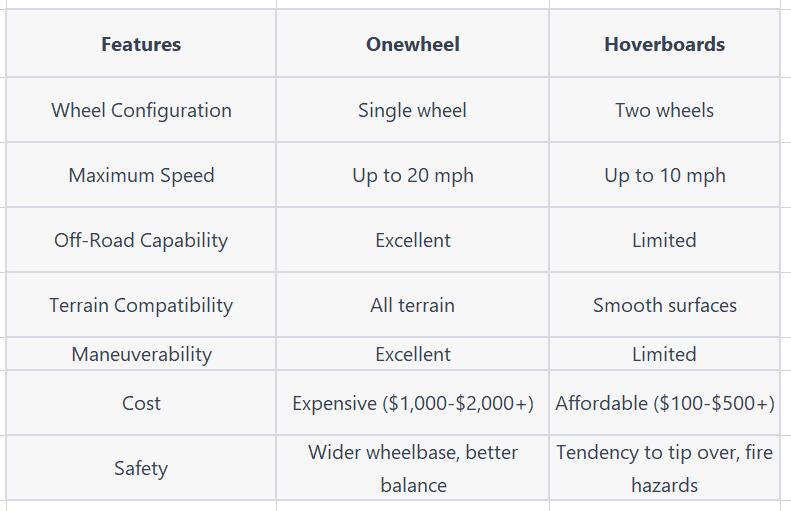
2. Riding Experience and Learning Curve
When it comes to riding experience, the Onewheel and hoverboard offer two very different options. The Onewheel provides a unique snowboarding-like experience, while the hoverboard feels more like riding a skateboard.
For beginners, both devices have a learning curve. The Onewheel’s single-wheel design demands a greater sense of balance and control, which may take some time to master. On the other hand, hoverboards have a steeper learning curve for beginners due to the need to balance on two wheels simultaneously.
Experienced riders may find the Onewheel to be more fun and sporty, while the hoverboard may be more suitable for indoor use or casual riding. Both devices offer a smooth ride, but the Onewheel’s large wheel and off-road capabilities make it more suitable for handling rough terrain.
3. Suitability for Different Ages and Skill Levels
When it comes to choosing between an Onewheel and a hoverboard, one of the key factors to consider is the rider’s age and skill level. Here’s a breakdown of which option might be best for different types of riders:
Kids
Both Onewheels and hoverboards can be a lot of fun for kids, but hoverboards are generally considered to be the safer option. They have a lower maximum speed and are easier to balance. This makes them a good choice for younger riders who are still developing their coordination and balance skills.
Adults
For adults, both Onewheels and hoverboards can be a great way to have fun and get around. Onewheels are generally better suited for more experienced riders who are looking for a challenge.
They require more balance and control than hoverboards and can be more difficult to maneuver, but they also offer a more unique and exciting riding experience. Hoverboards, on the other hand, are a good choice for adults who are looking for a more casual and laid-back ride.
Ages
In terms of age, both Onewheels and hoverboards can be suitable for a wide range of riders. However, it’s important to keep in mind that Onewheels are generally better suited for older riders who have more experience with board sports and are looking for a challenge.
Younger riders may find them too difficult to control and balance on. Hoverboards, on the other hand, are a good choice for riders of all ages.
4. Design and Aesthetics
When it comes to design and aesthetics, Onewheel and hoverboards have their own unique styles. Onewheel has a distinctive look with a single large wheel in the center of the board.
The board is made of high-quality materials like wood and carbon fiber, giving it a sturdy and durable feel. The design is both sleek and modern, making it a popular choice for those who value fashion and personality.
On the other hand, hoverboards have a more traditional design with two small wheels on each side of the board. They are available in a variety of colors and styles, making them a good choice for those who want to express their personality through their ride. However, they may not be as durable as Onewheel, and the wheels may wear out faster.
In terms of aesthetics, Onewheel and hoverboards both have their unique appeal. Onewheel’s single-wheel design gives it a futuristic and modern look, while hoverboards can be customized with different colors and patterns to match the rider’s style. Both rides are sure to turn heads and draw attention.
5. Price and Value
When it comes to price, Onewheels are generally more expensive than hoverboards. The cost of a new Onewheel ranges from around $1,000 to $2,000, while hoverboards can be found for as little as $100.
However, it’s important to consider the value of each option. Onewheels are known for their durability and ability to handle rough terrain, making them a great investment for those who plan to use them frequently and for longer distances. On the other hand, hoverboards may be a more affordable option for those who only plan to use them for short distances or occasional fun.
It’s also worth noting that the cost of maintenance and repairs can vary between the two options. Onewheels may require more maintenance due to their more complex design. While hoverboards may be more prone to breaking or malfunctioning due to their lower-quality materials.
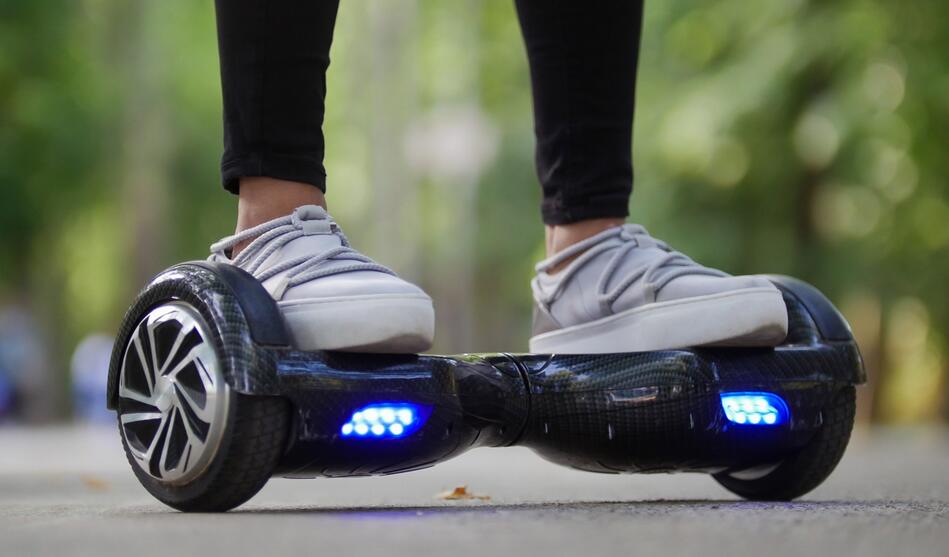
6. Portability and Transportation
When it comes to portability and transportation, hoverboards have the upper hand over Onewheels due to their compact size and lightweight design. Hoverboards are easy to carry around and can be stored in small spaces when not in use. This makes them a great option for people who need to commute short distances or travel with their transportation device.
On the other hand, Onewheels are bulkier and heavier due to their single-wheel design and larger frame. This might affect their portability, making them less convenient to carry around. However, some Onewheel models come with handles that make them easier to carry.
When it comes to transportation, both hoverboards and Onewheels are allowed on airplanes, but there are some restrictions. According to the TSA, lithium-ion batteries with a watt-hour rating greater than 100Wh are not allowed on airplanes. Most hoverboards and Onewheels have batteries with watt-hour ratings below 100Wh, but it’s always a good idea to check with the airline before traveling with your personal transportation device.
In terms of public transportation, hoverboards are more convenient to use than Onewheels due to their smaller size and lighter weight. Hoverboards can easily fit in a backpack or a small bag. This makes them easy to carry on buses, trains, and subways. Onewheels, on the other hand, might be too big to carry on public transportation, and riders might need to purchase a separate bag or case to transport them.
7. Safety and Regulations
When it comes to choosing between a Onewheel and a hoverboard, safety is a major concern. Both devices come with their own set of safety risks, and it’s important to understand these risks before making a purchase.
One of the biggest safety concerns with hoverboards is their tendency to catch fire or explode due to faulty batteries. This led to a recall of millions of hoverboards in 2016, and since then, the industry has made significant strides in improving safety. The UL2272 certification is now a standard requirement for hoverboards, ensuring that they meet rigorous safety standards for electrical and fire safety.
On the other hand, Onewheels have been associated with ejection hazards, leading to at least four deaths and multiple injuries. This has prompted the Consumer Product Safety Commission to issue a warning to consumers to stop using Onewheel self-balancing electric skateboards.
It’s important to note that Onewheels are not UL2272 certified. This means they have not been tested for electrical and fire safety like hoverboards.
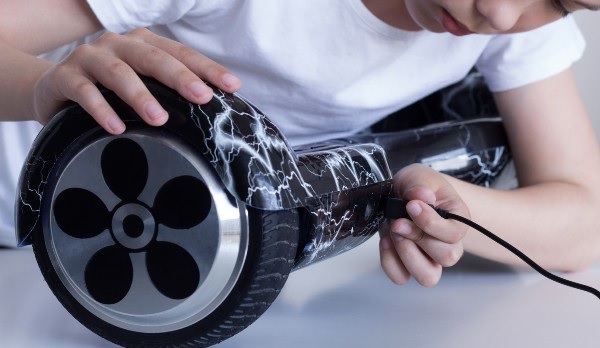
8. Maintenance and Durability
Both Onewheels and hoverboards require regular maintenance to ensure they remain in good condition and operate safely. However, Onewheels tend to be more durable and require less maintenance than hoverboards.
Onewheels have a simple design with fewer moving parts, which means fewer things can go wrong. The tire is the most critical component of a Onewheel, and it should be checked regularly for wear and tear. Riders should also inspect the bearings and bolts for any signs of damage or looseness. Onewheels are built to be sturdy and durable, making them suitable for off-road use.
Hoverboards are more complex than Onewheels and have more moving parts. They require regular maintenance to ensure they operate correctly and safely. The tires, motors, and batteries are the most critical components of a hoverboard and should be checked regularly.
The tires should be inspected for wear and tear, and the motors and batteries should be checked for signs of damage or overheating. Riders should also inspect the hoverboard’s frame, footpads, and sensors for any signs of damage or looseness.
In terms of durability, Onewheels are built to last and can withstand rough terrain and off-road use. Hoverboards, on the other hand, are more fragile and can be easily damaged if not ridden carefully. Onewheels are also more water-resistant than hoverboards, making them suitable for riding in wet conditions.
Conclusion
When it comes to choosing between Onewheel and hoverboard, there are several pros and cons to consider. Here are some of the key points to keep in mind:
Onewheel Pros
- Speed: Onewheels are incredibly fast and can reach speeds of up to 19mph on a smooth surface, making them a great option for those who want a thrilling ride.
- Versatility: Onewheels are designed to handle rough terrain quite well, making them suitable for off-road adventures. They can also handle inclines of up to 30 degrees, making them ideal for hilly areas.
- Stability: The single-wheel design of Onewheels provides excellent stability, making them easier to balance on than hoverboards. This feature is particularly useful for beginners who are still getting used to riding.
Onewheel Cons
- Cost: Onewheels are generally more expensive than hoverboards, making them less accessible to those on a tight budget.
- Learning Curve: Riding a Onewheel can take some time to get used to, particularly if you’ve never ridden a board before. It can take several hours of practice to feel comfortable on an Onewheel.
Hoverboard Pros
- Affordability: Hoverboards are generally less expensive than Onewheels, making them a more accessible option for those on a tight budget.
- Ease of Use: Hoverboards are generally easier to learn to ride than Onewheels. They have a more stable platform, making them easier to balance.
- Portability: Hoverboards are generally more compact and lightweight than Onewheels, making them easier to transport.
Hoverboard Cons
- Limited Terrain: Hoverboards are best kept indoors or on smooth, flat surfaces. They are not well-suited for rough terrain or off-road adventures.
- Safety Concerns: Hoverboards have been known to catch fire, and there have been several reports of injuries caused by falls. It’s important to choose a high-quality hoverboard and take appropriate safety precautions when riding.
Overall, the choice between Onewheel and hoverboard comes down to personal preference and intended use. Consider the pros and cons carefully before making a decision.

